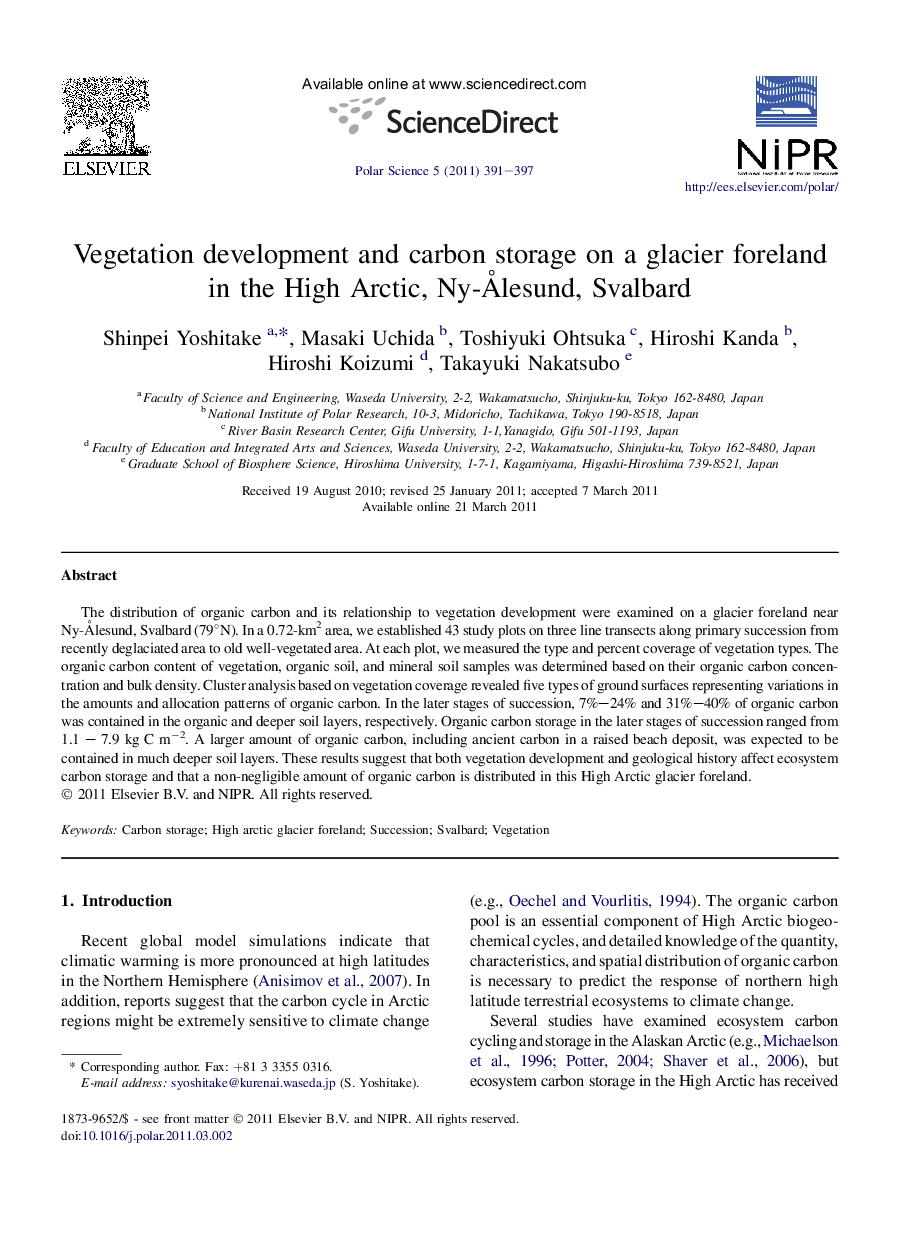| Article ID | Journal | Published Year | Pages | File Type |
|---|---|---|---|---|
| 4683407 | Polar Science | 2011 | 7 Pages |
The distribution of organic carbon and its relationship to vegetation development were examined on a glacier foreland near Ny-Ålesund, Svalbard (79°N). In a 0.72-km2 area, we established 43 study plots on three line transects along primary succession from recently deglaciated area to old well-vegetated area. At each plot, we measured the type and percent coverage of vegetation types. The organic carbon content of vegetation, organic soil, and mineral soil samples was determined based on their organic carbon concentration and bulk density. Cluster analysis based on vegetation coverage revealed five types of ground surfaces representing variations in the amounts and allocation patterns of organic carbon. In the later stages of succession, 7%–24% and 31%–40% of organic carbon was contained in the organic and deeper soil layers, respectively. Organic carbon storage in the later stages of succession ranged from 1.1 – 7.9 kg C m−2. A larger amount of organic carbon, including ancient carbon in a raised beach deposit, was expected to be contained in much deeper soil layers. These results suggest that both vegetation development and geological history affect ecosystem carbon storage and that a non-negligible amount of organic carbon is distributed in this High Arctic glacier foreland.
